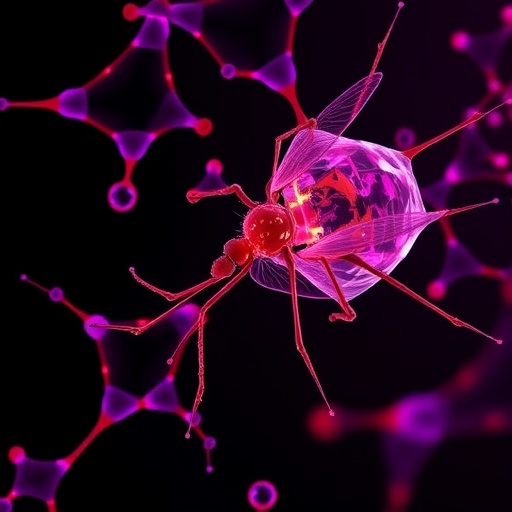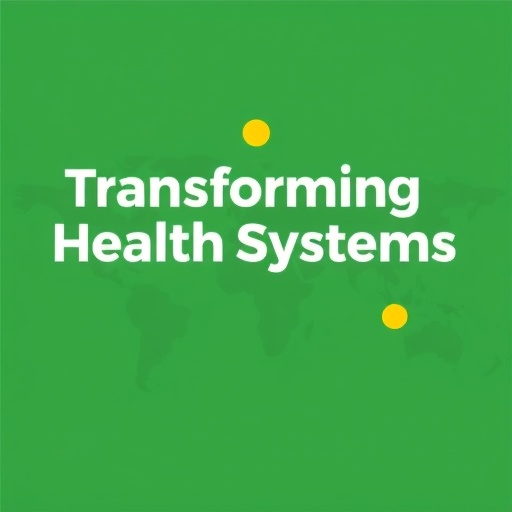
In a groundbreaking stride toward combating dengue virus infections, researchers have unveiled a pioneering approach that leverages human pluripotent stem cell-derived liver organoids to recapitulate the complex dynamics of dengue virus replication and pathogenesis. This innovative bioengineering feat not only advances our understanding of viral behavior within human hepatic tissue but also opens promising avenues for high-throughput antiviral drug screening, addressing a major global health challenge.
Dengue virus, a mosquito-borne flavivirus, continues to pose a formidable threat worldwide, particularly in tropical and subtropical regions. Despite decades of intensive research, effective therapeutic interventions remain scant, primarily hindered by the lack of physiologically relevant human models that mimic the intricate virus-host interactions. Traditional cell lines and animal models frequently fail to capture the nuanced pathology of dengue virus infection in human liver tissue, a critical site of viral replication and immune response modulation.
The research team, led by Li and colleagues, harnessed the remarkable differentiation potential of human pluripotent stem cells (hPSCs) to fabricate three-dimensional liver organoids. These miniaturized, self-organized tissue constructs recapitulate liver-specific architecture and functionality, exceeding the fidelity of conventional two-dimensional cultures. Importantly, these organoids demonstrated the capacity to model dengue virus infection accurately, reflected by robust viral replication, cytopathic effects, and host immune responses that parallel clinical observations.
Creating liver organoids from hPSCs involves meticulous orchestration of signaling pathways and growth factors guiding cells through early developmental stages toward hepatic lineage commitment. The resulting organoids, composed of hepatocyte-like cells embedded in a supportive extracellular matrix, exhibit hallmark liver functions, including albumin secretion and cytochrome P450 activity. This biochemical authenticity is vital to simulate the hepatic milieu in vivo, ensuring viral life cycle stages and host defense mechanisms unfold naturally.
Upon exposing the liver organoids to dengue virus, the research team observed dynamic infection kinetics characterized by escalating viral RNA levels over time, accompanied by morphological alterations indicative of cellular distress. Crucially, the infection elicited innate immune activation within the organoids, exemplified by the upregulation of interferon-stimulated genes and pro-inflammatory cytokines. This response mimics the antiviral defenses mounted by human liver cells during natural infection, underscoring the organoids’ physiological relevance.
The researchers also employed advanced imaging modalities to interrogate viral entry, assembly, and egress within the organoids. High-resolution confocal microscopy revealed the spatial distribution of dengue viral antigens co-localizing with hepatocyte markers, corroborating successful viral tropism and propagation. These insights into subcellular viral localization inform future therapeutic targeting strategies, potentially disrupting critical stages of the viral life cycle.
One of the study’s most transformative aspects lies in the liver organoids’ utility as a platform for antiviral drug screening. Existing dengue therapies are limited, and the emergence of resistance necessitates novel compounds assessed rigorously for efficacy and toxicity. The organoids provided a scalable, reproducible assay system wherein candidate antivirals could be evaluated against authentic human-like infection conditions. Several compounds tested demonstrated significant reductions in viral replication within the organoids without cytotoxicity, validated through quantitative PCR and cell viability assays.
Furthermore, the use of organoids circumvents ethical and scientific limitations of animal models, reducing reliance on non-human primates and enabling patient-specific studies. Given the donor-specific characteristics of hPSC lines, personalized liver organoids could model individual susceptibility and response to dengue virus, paving the way for precision medicine approaches in flavivirus infections.
The incorporation of transcriptomic analyses deepened understanding of host-pathogen interplay within the organoids. Differential gene expression profiling before and after infection highlighted pathways perturbed by dengue virus, including those regulating apoptosis, metabolism, and immune signaling. These molecular signatures serve as biomarkers for disease progression and offer targets for therapeutic intervention.
Importantly, the organoid model addresses a critical bottleneck in antiviral research by faithfully modeling the liver’s microenvironment, including cell-cell interactions and three-dimensional structure. Such complexity is imperative, as dengue pathogenesis involves not only viral cytotoxicity but also dysregulated immune responses and vascular leakage, processes partially orchestrated by hepatic cells. Future iterations of organoids may integrate additional cell types, such as Kupffer cells and endothelial cells, further enhancing model fidelity.
The implications of this research extend beyond dengue virus to other hepatotropic viruses, including hepatitis B and C viruses, where human-relevant infection models are similarly lacking. By establishing a versatile organoid platform, the study lays the foundation for broad-spectrum antiviral discovery and mechanistic studies of liver infections.
Challenges remain, particularly in scaling organoid production for widespread application and ensuring consistent maturation states that affect viral susceptibility. Nonetheless, continuous refinement of differentiation protocols and biomaterial scaffolds promises to enhance reproducibility and throughput, key factors for translational success.
In conclusion, the creation of human pluripotent stem cell-derived liver organoids marks a pivotal advance in infectious disease modeling. This approach enables detailed elucidation of dengue virus biology within authentic human tissue context and provides a robust tool for accelerating antiviral drug development. As dengue incidence escalates globally, innovations such as this provide critical ammunition in the fight against this insidious virus.
The study by Li et al. epitomizes the synergy of stem cell biology, virology, and bioengineering in confronting emergent infectious diseases. By bridging the gap between cellular models and clinical pathology, organoid technology stands to revolutionize how researchers investigate viral infections and translate findings into effective therapies for millions affected worldwide.
Subject of Research: Dengue virus infection modeling using human pluripotent stem cell-derived liver organoids and antiviral drug screening.
Article Title: Recapitulating dengue virus infection with human pluripotent stem cell-derived liver organoids for antiviral screening.
Article References:
Li, MQ., Xu, YP., Li, K. et al. Recapitulating dengue virus infection with human pluripotent stem cell-derived liver organoids for antiviral screening. Nat Commun 16, 8069 (2025). https://doi.org/10.1038/s41467-025-63323-3
Image Credits: AI Generated
Tags: antiviral drug screening innovationsbioengineering in infectious diseasedengue virus pathogenesis modelingdengue virus research advancementsdengue virus-host interactionshigh-throughput screening for antiviral therapieshuman liver tissue modelshuman pluripotent stem cells in virologymosquito-borne virus challengesstem cell-derived liver organoidsthree-dimensional liver organoidstropical disease research advancements




